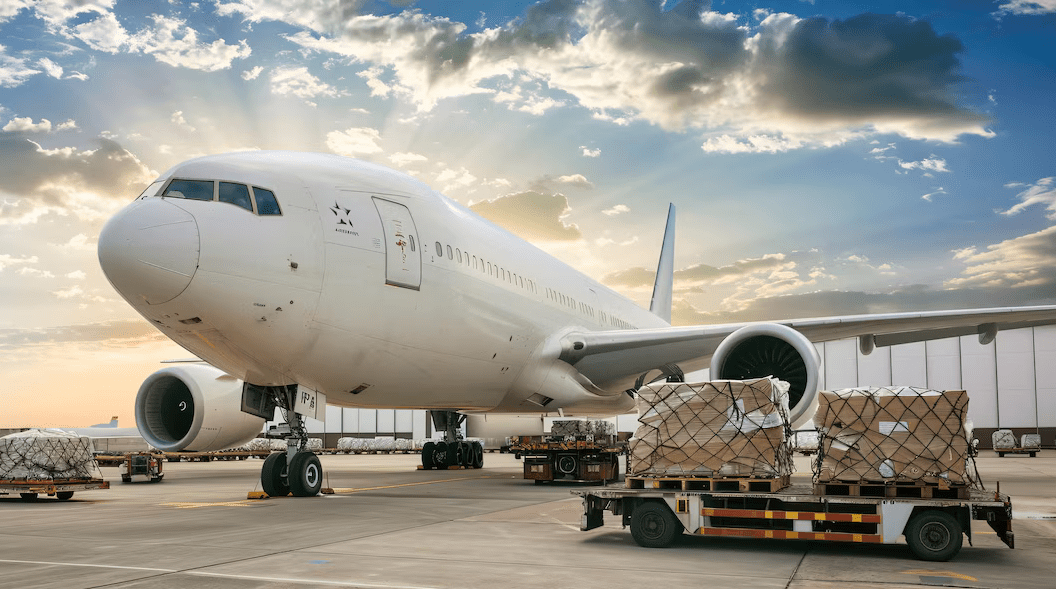Cargo aviation plays a vital role in global trade and logistics, transporting goods and materials across vast distances in a time-sensitive manner. While it shares many similarities with passenger flights, there are significant differences that impact the day-to-day operations and responsibilities of pilots.
Cargo aviation is centred around the transportation of freight rather than passengers. This distinction influences nearly every aspect of a flight, from the planning stages to the actual operation of the aircraft. While passenger airlines focus on delivering people to their destinations with a high level of comfort and convenience, cargo airlines prioritise the efficient and safe delivery of goods.
One of the key distinctions is that cargo flights often carry goods that are perishable, hazardous, or time-sensitive. This means that cargo pilots must have a thorough understanding of the specific regulations and procedures related to the transportation of various types of cargo.
Additionally, cargo pilots must be adept at managing the weight and balance of the aircraft, as the distribution of freight can significantly impact the flight’s performance and safety.
Flight planning and scheduling
Flight planning in cargo aviation is influenced by the nature of the cargo and the specific requirements of the delivery. Unlike passenger flights, which operate on fixed schedules and routes, cargo flights often have more flexibility. This can result in irregular hours and varying routes, depending on the needs of the shipment. For example, a cargo pilot might be tasked with flying overnight to ensure that goods arrive at their destination by morning, which requires adaptability and resilience.
Weather conditions also affect cargo flight scheduling. While passenger flights might be delayed or cancelled due to adverse weather, cargo flights often proceed because of the urgency of the shipment. This requires cargo pilots to be highly skilled in managing challenging weather conditions and making real-time decisions to ensure the safety and success of the flight.
Aircraft and equipment
Cargo planes are often designed or modified to maximise cargo space, with features such as large cargo doors, reinforced floors, and specialised loading equipment. These aircraft are often older models that have been converted from passenger use to cargo use, but some cargo airlines operate new, purpose-built freighters.
In contrast to passenger aircraft, which are designed with amenities for comfort, cargo aircraft are often stripped down to the essentials. This lack of passenger-related equipment results in lighter planes, allowing for more cargo capacity and different handling characteristics. Pilots must be familiar with these differences and understand how they impact flight dynamics, particularly during take-off, landing, and in-flight manoeuvres.
Crew operations
The crew operations on cargo flights also differ significantly from passenger flights. For instance, cargo flights typically operate with smaller crews, sometimes with just two pilots and no flight attendants. The absence of passengers changes the dynamic in the cockpit, allowing pilots to focus solely on the operation of the aircraft without the added responsibility of ensuring passenger comfort and safety.
However, this also means that cargo pilots must be more self-sufficient and capable of handling various situations independently. For example, if a mechanical issue arises during a flight, cargo pilots may need to troubleshoot the problem on their own without the immediate assistance of a cabin crew. This requires a high level of technical knowledge and problem-solving skills.
Regulatory and safety considerations
Cargo aviation is subject to different regulatory and safety considerations compared to passenger flights. For instance, the transport of dangerous goods, such as chemicals, batteries, and flammable materials, is heavily regulated. Cargo pilots must be trained in the handling and transportation of these materials, including understanding the specific documentation, labelling, and storage requirements.
Furthermore, the safety protocols for cargo flights often differ from those for passenger flights. While both types of flights adhere to strict safety standards, cargo flights may have additional considerations related to the nature of the cargo. For example, live animals or hazardous materials may require specialised procedures to ensure their safe transport. Pilots must be aware of these protocols and ensure compliance with all relevant regulations.
Flight experience and career path
The career path for cargo pilots can differ from that of passenger airline pilots. Many cargo pilots begin their careers in smaller regional cargo operations before moving on to larger international carriers. The experience gained in cargo aviation, particularly in handling diverse and challenging flight conditions, can be invaluable and often leads to further opportunities within the industry.
For those looking to advance their careers in aviation, obtaining a commercial pilot licence in Australia can open doors to various opportunities in both cargo and passenger aviation. Additionally, specialised training programs, such as a diploma of aviation in Melbourne, can provide aspiring pilots with the necessary skills and knowledge to excel in the industry.
Impact on pilot lifestyle
The lifestyle of a cargo pilot can differ greatly from that of a passenger airline pilot. Cargo pilots often work irregular hours, including nights, weekends, and holidays, to accommodate the demands of cargo transport. This can lead to a unique set of challenges, including managing sleep patterns and maintaining a work-life balance.
However, many cargo pilots appreciate the autonomy and variety that comes with the job. The opportunity to fly diverse routes, handle different types of cargo, and work in a more independent environment can be appealing to those who enjoy the challenge and responsibility that comes with cargo aviation.
Cargo aviation and passenger flights, while similar in many ways, present unique challenges and opportunities for pilots. From the nature of the cargo to the differences in aircraft, crew operations, and regulatory considerations, cargo aviation requires a distinct set of skills and expertise. For pilots interested in pursuing a career in this field, understanding these differences is crucial to success.



